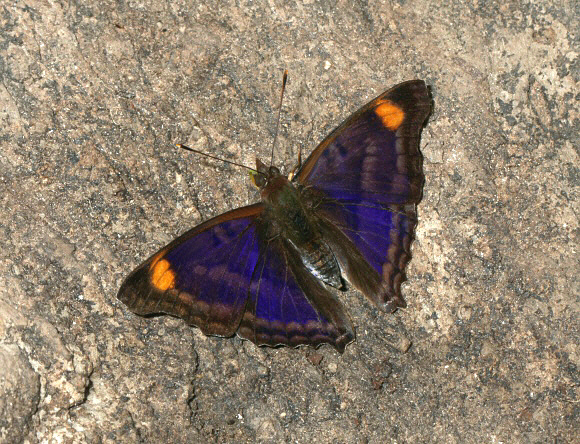
Introduction
There are 15 Doxocopa species. They can be loosely divided into 2 groups: The lavinia group have Adelpha-like bands across the wings. In most species, the wings of males reflect iridescent turquoise or purple hues. Doxocopa pavon is smaller than most other species in of the lavinia group, and the underlying white bands of the males are suffused and barely distinguishable. The females, however, have broad white bands across the wings and lack the purple sheen.
Doxocopa pavon is found from Mexico to Paraguay and northern Argentina.
Habitats
The butterfly breeds in rainforest habitats at altitudes between about 200-1000m.
Lifecycle
The caterpillar feeds on Celtis species (Ulmaceae). When fully grown, it is green, strongly tapered towards the anal segment, and has a pair of forward-projecting horns on its head.
The chrysalis is probably similar to that of other Apaturines, which are typically flattened laterally, arched dorsally, and superbly camouflaged as living or dead foliage.
Adult behaviour
Males are often seen on sunny forest tracks, imbibing mineral-rich moisture from rocks, or feeding at carrion or fermenting fallen fruit. Females are much scarcer and rarely seen, as they spend most of their time high in the forest canopy. Both sexes nectar at Croton and Cordia.
